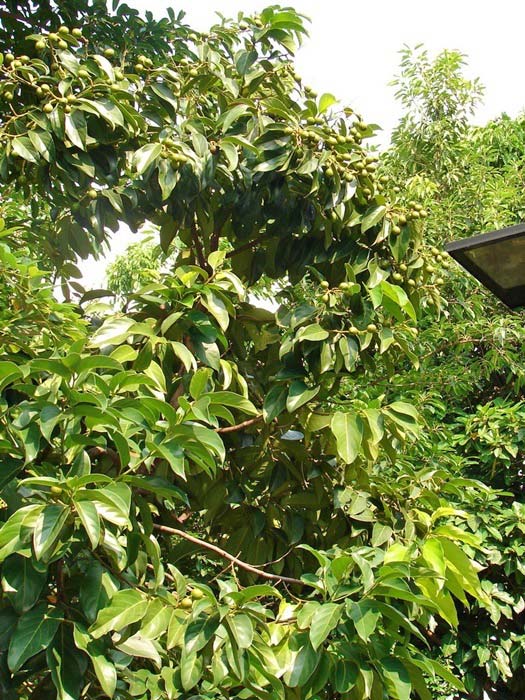Cryptocarya elliptifolia
The large-fruit cryptocarya is native to the Philippines and Taiwan, where it occurs only on Orchid Island (Lanyu). Because of its small population size and restricted habitat, it has been classified as Critically Endangered, facing a high risk of extinction in the wild and requiring immediate conservation attention. In recent years, the Botanical Garden of the National Museum of Natural Science has devoted significant effort to the conservation and propagation of Taiwan’s native rare plants. Through successful artificial propagation, large numbers of large-fruit cryptocarya seedlings have been cultivated, contributing substantially to the preservation of this species. Propagation not only helps expand population numbers but also reduces collection pressure on wild individuals, laying a solid foundation for future habitat restoration and reintroduction efforts.
This evergreen tree features a graceful form, dense foliage, and fruits with a long-lasting ornamental appeal. When mature, the fruits turn glossy black, hanging among the green leaves to create a striking contrast. With its extended fruiting period and attractive tree shape, the large-fruit cryptocarya adds depth and visual richness to garden landscapes. Because of its ecological importance, distinctive beauty, and adaptability, promoting its use in landscape planting can both increase cultivation opportunities and raise public awareness of its conservation value-helping foster a deeper appreciation for Taiwan’s native endangered flora.
At the National Museum of Natural Science, the large-fruit cryptocarya trees are planted in the Orchid Island Area of the Botanical Garden and in the herb garden of the Human Cultures Hall. In the Botanical Garden, flowering and fruiting span roughly half a year. The blossoms open gradually rather than all at once, and the fruits likewise ripen in succession. From late August or early September until the end of the year, clusters of purple-black fruits can be seen hanging from the branches, adding a graceful accent to the garden’s tropical landscape.

